
Stools at Galerie Kreo
Starting this September, Parisian design gallery Galerie Kreo presents an exhibition of specially commissioned stools by designers including Julia Lohmann (above), François Azambourg (below), Andrée Putman and Alessandro Mendidi.
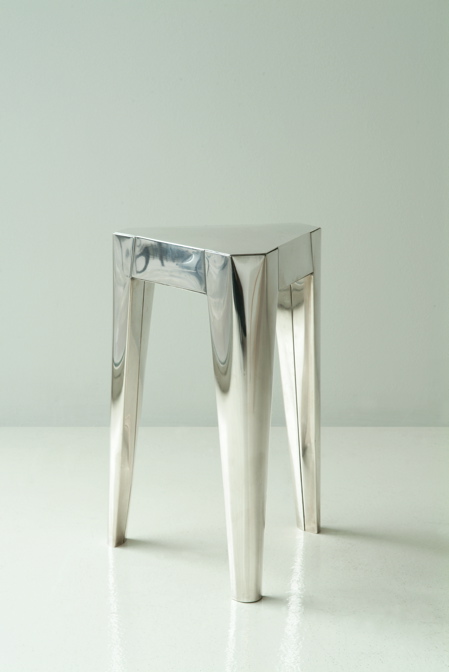
Lohmann’s stool is called Lasting Void and is made from a cast of the organ cavity of a slaughtered animal (see statement, below). Azambourg's stool is called Argent and is made of silver.
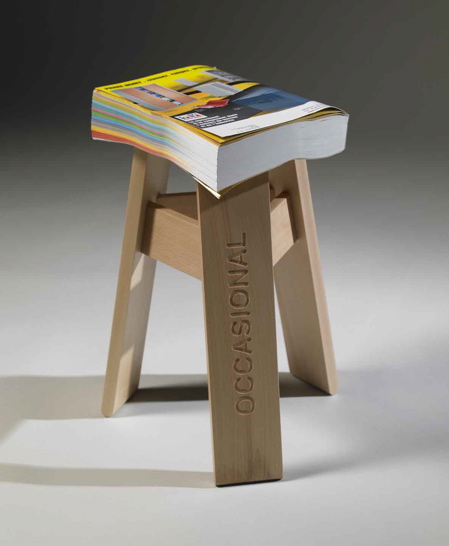
Above: Occasional by Pierre Charpin
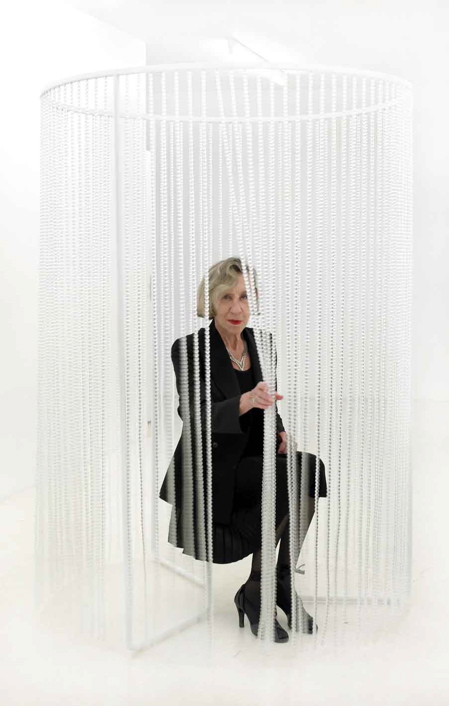
Above: Baldaquin by Andrée Putman
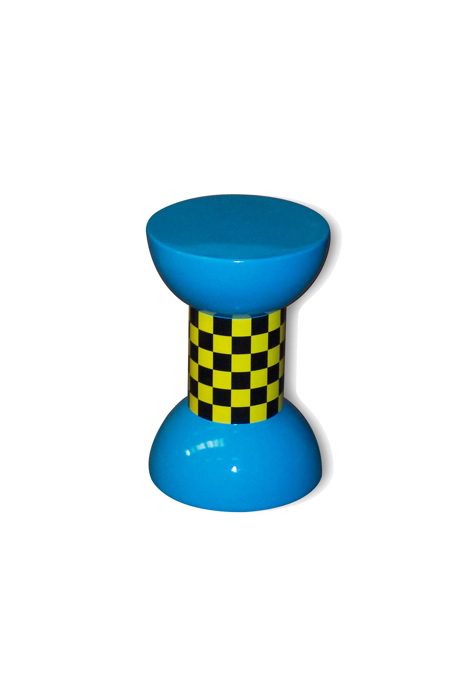
Above: Enigma by Alessandro Mendini
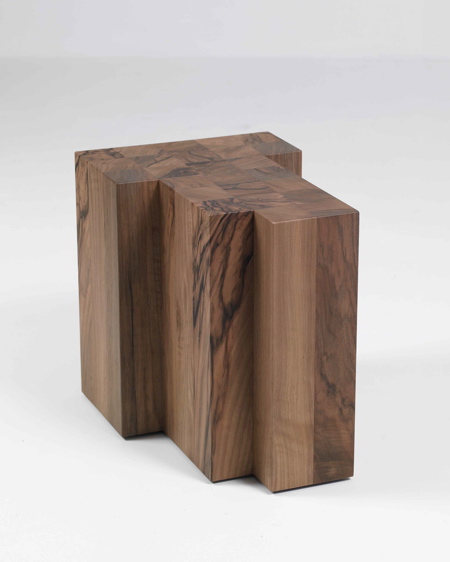
Above: ZZ by Martin Szekely
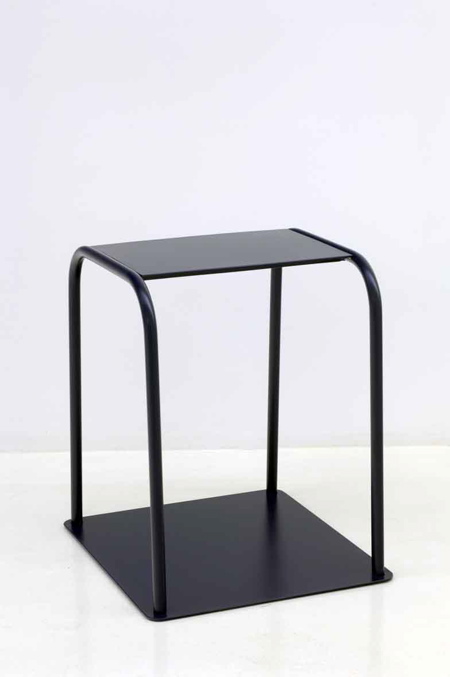
Above: Tabouret by Philippe Million
The exhibition, called Tabourets (Stools), runs from 8 September. Below are details, photos and some statements provided by Galerie Kreo:
--
"Tabourets" / "Stools"
September 8th - October 2007

TABOURET "LASTING VOID", JULIA LOHMANN (top image)
EDITEUR: GALERIE KREO
CRÉDITS PHOTO:
COURTESY GALERIE KREO
"LASTING VOID
When an animal is slaughtered its internal organs are removed. They leave behind a void, a negative space without purpose that vanishes soon after the creature's life itself. It exists only for the transitional period in which we turn an animal into a product and start to perceive its body as meat. Used as a mould, the vessel will cast an abstract archetypal form. The object challenges our established emotions, classifications and prejudices towards animals. Its shape is more akin to the embryonic stages of a new life form than to an animal end product.
Julia Lohmann, June 2007."

TABOURET "ARGENT" DE FRANçOIS AZAMBOURG
EDITEUR: GALERIE KREO
MATÉRIAUX: ARGENT MASSIF
IMAGE CREDITS:
COPYRIGHT MORGANE LE GALL
COURTESY GALERIE KREO

TABOURET "OCCASIONAL", PIERRE CHARPIN
EDITEUR: GALERIE KREO
CRÉDITS PHOTO:
COPYRIGHT FABRICE GOUSSET
COURTESY GALERIE KREO

TABOURET "ENIGMA", ALESSANDRO MENDINI
EDITEUR: GALERIE KREO
CRÉDITS PHOTO:
COURTESY GALERIE KREO
Enigma Stool
This stool is a volume made up of a cylinder on top and two half spheres on the bottom. This small system of primary shapes is made in fiberglass lacquered with high-gloss paint. The polychrome picture has a cylinder decorated with a black and yellow checkerboard pattern. The result is a little totem with an enigmatic appearance.
Alessandro Mendini
May 2007

TABOURET, PHILIPPE MILLION
EDITEUR: GALERIE KREO
CRÉDITS PHOTO:
COPYRIGHT FABRICE GOUSSET
COURTESY GALERIE KREO
"STOOL
With this proposal, I am trying, as is often the case, to remain as close as possible to the idea of an object, and to produce a shape from which nothing can be removed. All the while effectively satisfying expectations in terms of use.
I chose metal as in this case, it is more of a quality than a material; it exhibits the project more than it incarnates it. The function of the piece, while of the most obvious banality, is erased by the purity of the lines and perspectives.
The resulting ambiguity is accentuated by the choice of color that is not one we normally associate with furniture. In general, and here again, I am not trying to disguise the space using contemporary accessories, but more to propose interstices into which I have
slipped serious and light-hearted aphorisms.
Well, that’s what I’m trying to do.
Philippe Million, 2007"

TABOURET "BALDAQUIN", ANDRÉE PUTMAN
EDITEUR: GALERIE KREO
CRÉDITS PHOTO:
COPYRIGHT FABRICE GOUSSET
COURTESY GALERIE KREO
--
TABOURET "LASTING VOID", JULIA LOHMANN
EDITEUR: GALERIE KREO
CRÉDITS PHOTO:
COURTESY GALERIE KREO

TABOURET "Z.Z.", MARTIN SZEKELY
EDITEUR: GALERIE KREO
CRÉDITS PHOTO:
COPYRIGHT FABRICE GOUSSET
COURTESY GALERIE KREO
The ZZ stools.
Each stool is made up of 25 pieces of walnut wood, all identical, quartered,
stuck together in a different manner for each stool.
Two criteria for each composition of the 25 pieces of wood:
1. Each composition must be different.
2. Each stool must be stable.
Each new composition results in a new stool and a new potential use.
24 ZZ stools. There could be so many more.
July 2007
MSZ
--